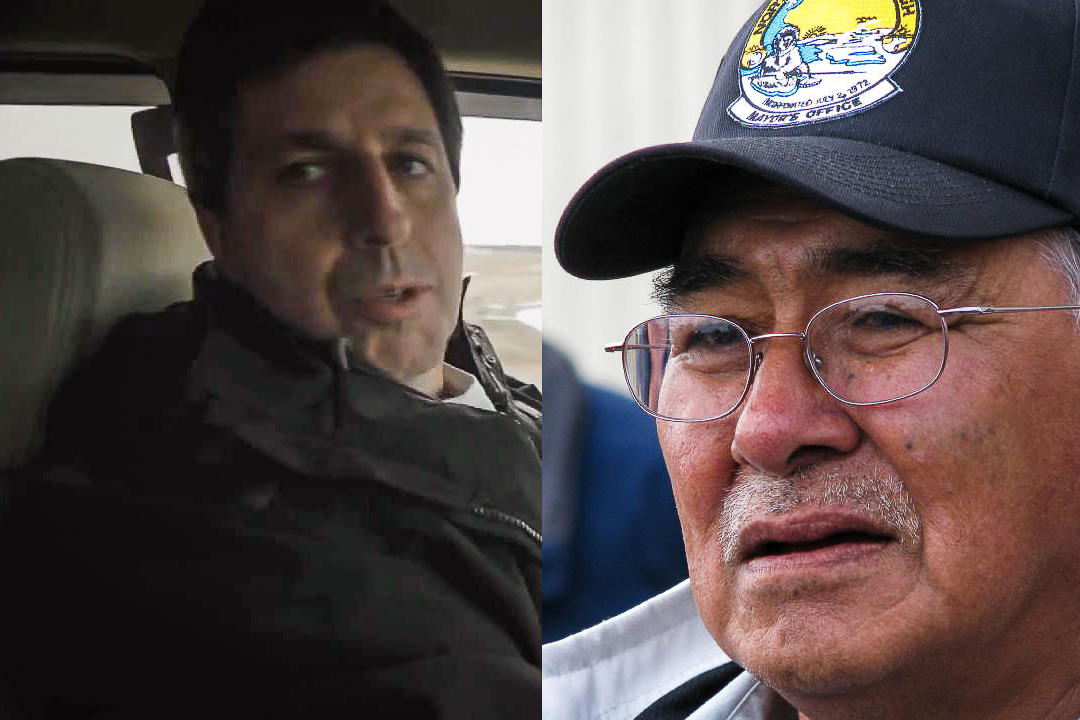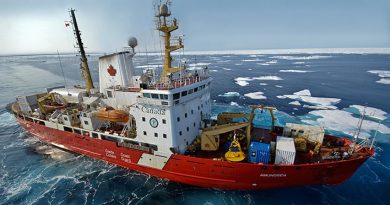How two vastly different men helped change the Alaskan Arctic
 Of all the things critics may say about Bob Reiss’s new book, “The Eskimo and the Oil Man: The Battle at the Top of the World for America’s Future,” don’t expect a lack of conflict complaint.
Of all the things critics may say about Bob Reiss’s new book, “The Eskimo and the Oil Man: The Battle at the Top of the World for America’s Future,” don’t expect a lack of conflict complaint.
Conflict is everywhere in the book: between individuals, between governments, between environmentalists and developers, between the old world and the new.
The book — as one might gather from the title — revolves around the U.S. and its moves, or lack thereof, toward developing Arctic resources.
It’s a big subject, and to ground it, Reiss — who has authored numerous fiction and nonfiction works, and has written for such publications as GQ, Rolling Stone, and Parade — looks to two men with intimate ties to Alaska.
About half of the book revolves around the relationship between Edward Itta, the Inupiat North Slope Borough mayor who served from 2005 until 2011, and Pete Slaiby, the man spearheading Shell Oil’s efforts to drill in the American Arctic. The book opens as the Deepwater Horizon is pouring oil into the Gulf of Mexico in April 2010, and Itta wonders what the explosion and subsequent release of millions of barrels of oil means for offshore drilling in the Arctic, while Slaiby is traveling to Barrow to do damage control.
Reiss said that he was “gratified and surprised” when Itta and Slaiby agreed to be the primary subjects of his book, and the two do represent a microcosm of the ongoing Arctic development debate. “The Eskimo and the Oil Man” touches on Arctic shipping, undersea land grabs, wrangling in the halls of Congress over ratifying the Law of the Sea, even an unannounced visit from a German cruise ship that had traveled over the top of Canada to anchor off Barrow in late summer of 2010.
Is Arctic development inevitable?
A common refrain in Alaska’s far north is that people aren’t necessarily opposed to development, they just want to see it done responsibly. That’s the view that Itta espouses in the book, as he tries to balance the subsistence needs of his people — who often still rely on whaling, fishing and hunting for food during the long winter months — with the revenue that oil development brings to the borough.
It’s but one struggle in the book. Reiss said that though his book is full of battles, U.S. complacency may be the biggest issue when it comes to creating Arctic resources. And not just in terms of development, but also in assets stationed above the Arctic Circle.
“The central conflict in the book is between the U.S. and the U.S.,” Reiss said. “How we as a nation, we as an empire, will deal with this crucial new opening area on earth. Will we meet the challenges it presents, or will we fail?”
All this is while a debate rages about how long it will be before the Arctic is “open for business” — if it ever is.
“The disagreement seems to be about the speed with which the Arctic will open, not the fact itself,” Reiss said. “Even if we take oil out of it, forget about Shell for a second, we’re still faced with certain inevitable things. Shipping, mining, even a presence up there all constitute development,” he said.
In the book, the reader spends time on a research mission aboard the U.S. Coast Guard icebreaker Healy — perhaps best known to the public as the ship that escorted the Russian fuel-tanker Renda during an unprecedented mission to deliver fuel to the ice-locked community of Nome in January. He also attends war games at the Naval College in Annapolis.
Reiss said that such activities wouldn’t be necessary if the melting Arctic were just some pipe dream.
“Those weren’t science fiction writers thinking about those (wargame) scenarios. It wasn’t environmentalists; it was a cold hard look by the U.S. Navy,” he said.
If you ever spend time in rural Alaska, especially in the far north, you’ll hear anecdotes about climate change from locals, about how the sea ice is departing earlier than it has in years past. For Reiss, those anecdotes are worth listening to. Reiss points to the fact that not only is climate change more pronounced in the Arctic, the Inupiaq language wasn’t formally written until the 20th century. According to Reiss, that lends weight to the assertions being made by residents of northern communities.
“An anecdote in a culture that uses written words is less important than in a culture that doesn’t have writing,” he said.
Indeed, there are other examples of unprecedented activity in Alaska’s Arctic waters. One incident in the book recalls a moment after the Healy had returned to Barrow upon completing its research mission.
Departing scientists carried bags to the copter hangar. Barrow lacks a harbor, so we’d have to fly to shore. Stepping outside in float suits for the ride, we were surprised to see a large white cruise ship anchored nearby. Tinged reddish from the rising sun, it looked magnificent and could have easily graced a travel magazine cover.
“Where the hell did that come from?” one sailor asked.
The Coast Guard had not known it was coming and neither had anyone in Barrow. The Hanseatic, out of Germany, had crossed the Northwest Passage and stopped in Barrow unannounced. The ship landed tourists, and city residents were surprised to see them walking around, taking pictures.
Reiss said that he was surprised with what he came away from his time in the Arctic. In light of all that’s happening, Alaska and U.S. are way behind in development compared to other nations, he said. This is evident in the way that the Coast Guard has been lobbying hard for funding to purchase new icebreakers, with the help of Alaska’s U.S. Sens. Mark Begich and Lisa Murkowski.
It’s easy for the U.S. to forget the fact that it’s an Arctic nation. Alaska is a distant dream, a little island on maps of the country, sitting next to Hawaii. It’s easy to marginalize Alaska’s location in world politics.
“Most of my audience doesn’t think about the Arctic, doesn’t think about Alaska, even though they should be,” he said.
There are no smoking guns in “The Eskimo and the Oil Man,” no grand revelations, no solutions to the problems that persist in the Arctic, about ways to reconcile the old with the new.
Reiss said that he would probably consider himself an environmentalist, but at some point, environmentalists have to decide when a company has done enough and will support development. He said that Shell has made “concession after concession” to those concerned about the Arctic marine environment — including stalling work during hunting seasons, run through lengthy permitting processes, will allow inspectors on their drilling rigs 24 hours per day, and have designed numerous systems to prevent an event like the Deepwater Horizon in the Arctic.
“As good as the system is,” Reiss said, “unless something happens, nobody knows how well it would work. The bottom line is: Can you legislate perfection?”
It’s a question that will have to be answered at some point, though that hasn’t happened yet; Shell continues to face considerable opposition in its plans to drill in the Arctic, and more than a year after the conclusion of Reiss’s book, has yet to sink a drill bit — even for exploratory purposes — in Alaska’s northern seas.
For more stories from Alaska Dispatch, click here



